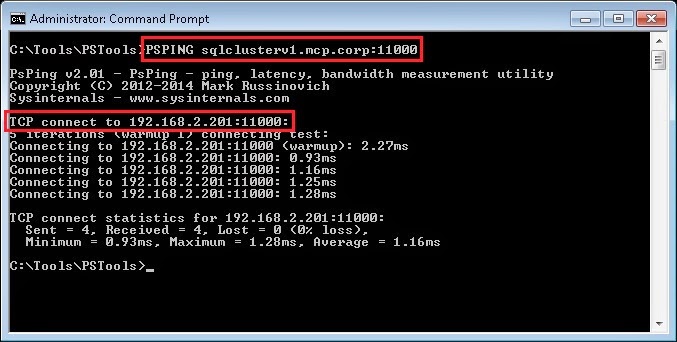Recently I’ve been learning more about how Azure functions and how it can help my customers. One of the best ways for me to learn about Azure was to build out my own environment using VMs, or Infrastructure as a Service (IaaS). All of that was easy; however, once the VMs were built I soon learned that Azure functions differently than an On-Premise solution.
The most basic network connectivity test that administrator use is the PING command. It is part of the ICMP protocol, but it’s disabled by default on each VM that I deployed. While it was easy enough just to configure the Windows Firewall to allow that traffic through, I decided to search for an alternative.
I found PsPing from SysInternals. It performs the same functionality as PING, but it uses the TCP protocol instead. When working in Azure, it can give you the same functionality without having to reconfigure your VMs.
For example, when I setup a SQL Server instance on one VM, I had difficulty establishing a connection to it from another VM. The standard PING proved to be useless, but PsPing proved its worth. By specifying the server name and a port number, I was able to successfully connect directly to the port number that SQL Server was listening on.
Immediately, I could see the benefit of using this new tool for more than just testing SQL Server connectivity. I can use it to specify any port number for any service. For example, I could ping port 80 if I’m testing a website, port 21 if it were an FTP server, or port 23 for telnet.
As I dig deeper into Azure, I’m sure I will discover many other new utilities that I can add to my own toolbox.
You can download PsPing from here.



